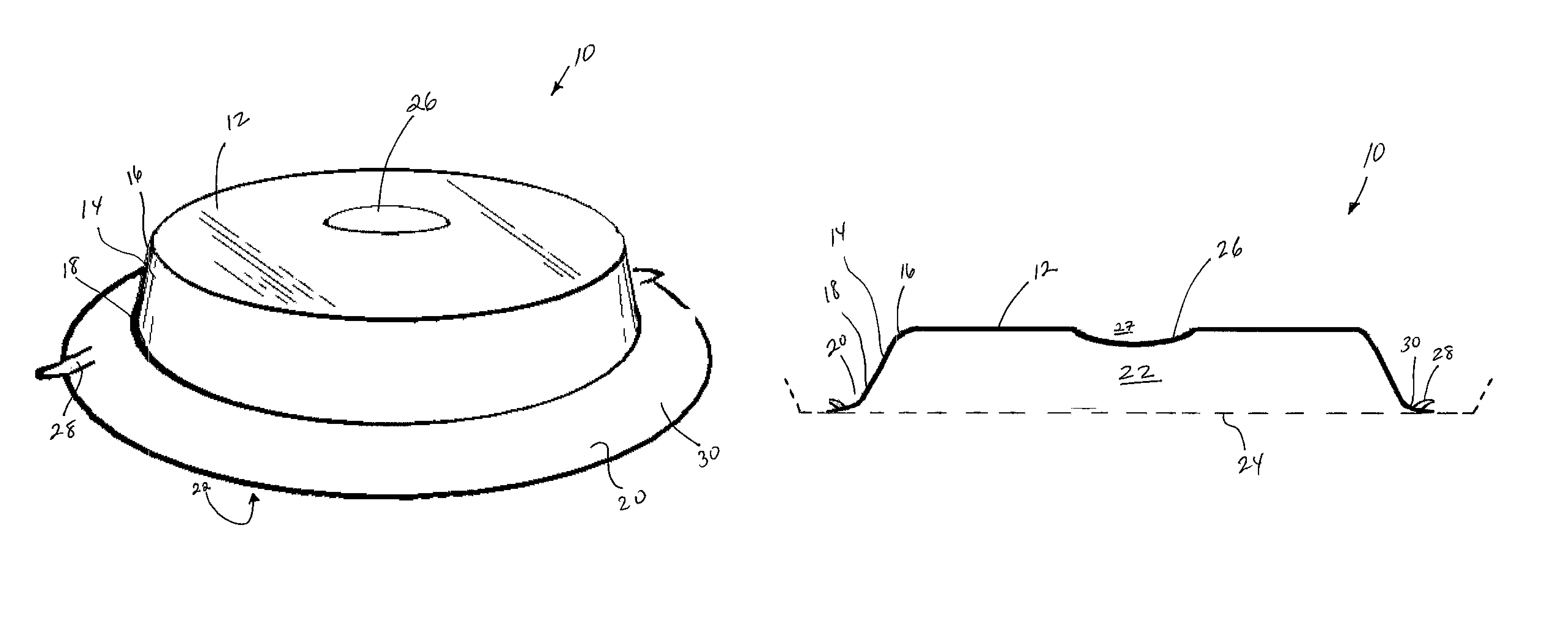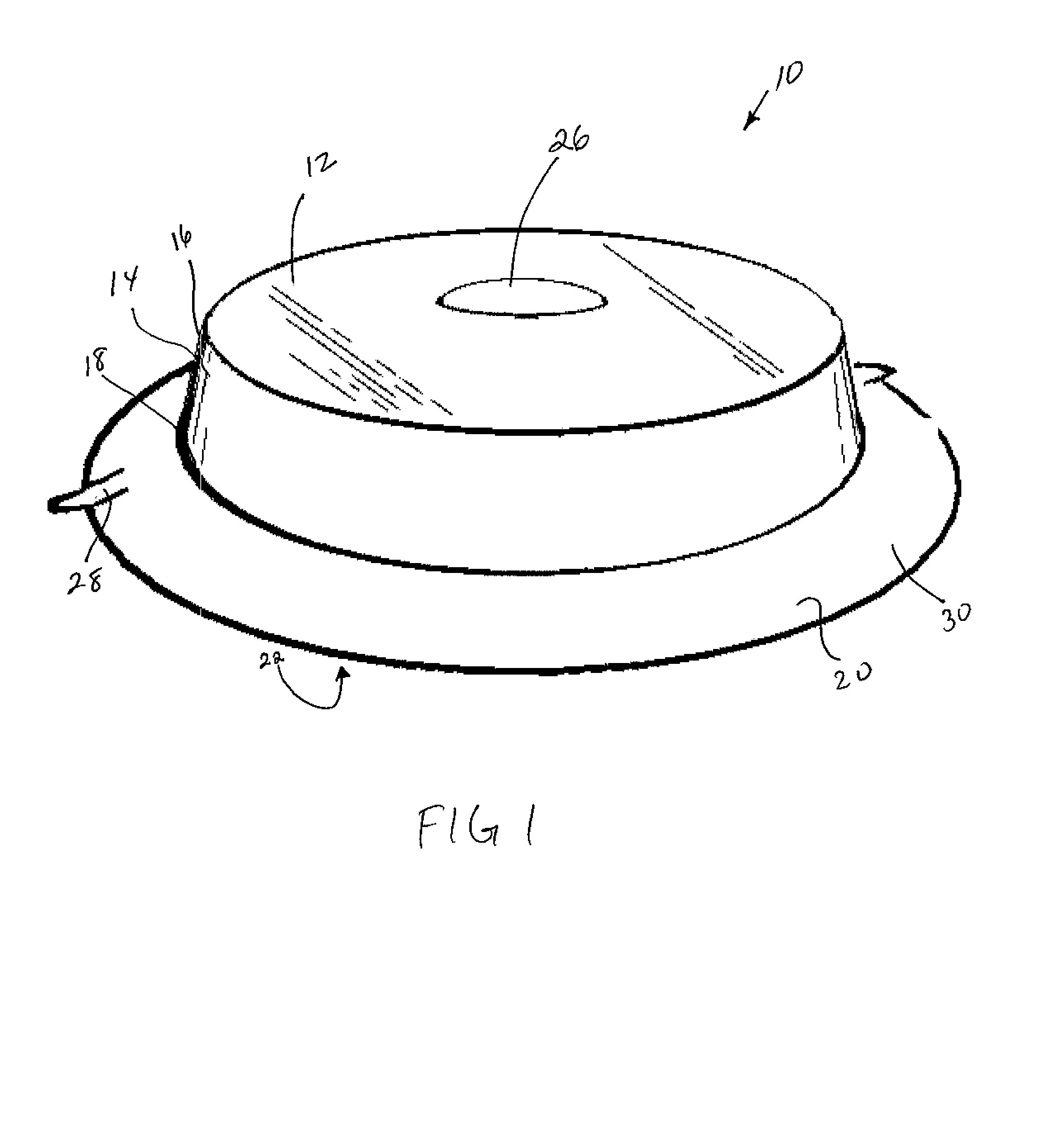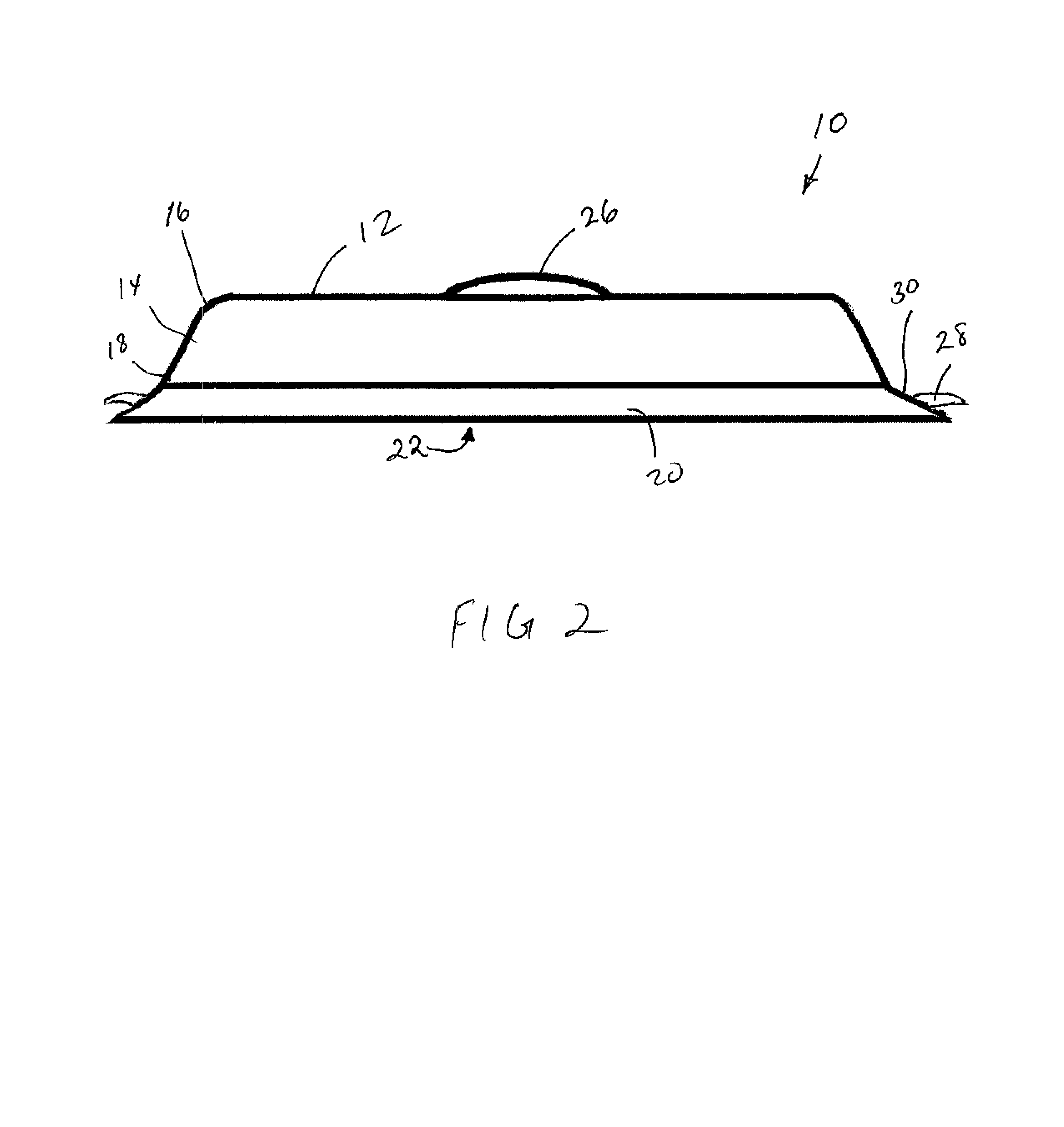Food storage device
- Summary
- Abstract
- Description
- Claims
- Application Information
AI Technical Summary
Benefits of technology
Problems solved by technology
Method used
Image
Examples
Embodiment Construction
[0023]Referring now to the FIG. 1, a preferred embodiment of a food storage device generally designated by reference numeral 10 is illustrated. It is to be understood that although the invention is illustrated as having a preferred substantially cylindrical shape with a generally flat top, that other shapes may also be utilized without departing from the essence of the invention. For purposes of illustration, but not limitation, device 10 may be dome shaped or rectangular and designed to enclose food therein.
[0024]Device 10 has a surface 12 with a substantially peripheral wall 14 extending therefrom. Wall 14 has an upper end 16 and a lower end 18, whereby upper end 16 is in communication with surface 12 and lower end 18 is distal to the surface 12. In a preferred embodiment, surface 12 and wall 14 are substantially rigid and constructed of clear hard plastic or any other substantially rigid material that may be used in conjunction with a microwave oven. However, it is to be understo...
PUM
 Login to View More
Login to View More Abstract
Description
Claims
Application Information
 Login to View More
Login to View More - R&D
- Intellectual Property
- Life Sciences
- Materials
- Tech Scout
- Unparalleled Data Quality
- Higher Quality Content
- 60% Fewer Hallucinations
Browse by: Latest US Patents, China's latest patents, Technical Efficacy Thesaurus, Application Domain, Technology Topic, Popular Technical Reports.
© 2025 PatSnap. All rights reserved.Legal|Privacy policy|Modern Slavery Act Transparency Statement|Sitemap|About US| Contact US: help@patsnap.com



